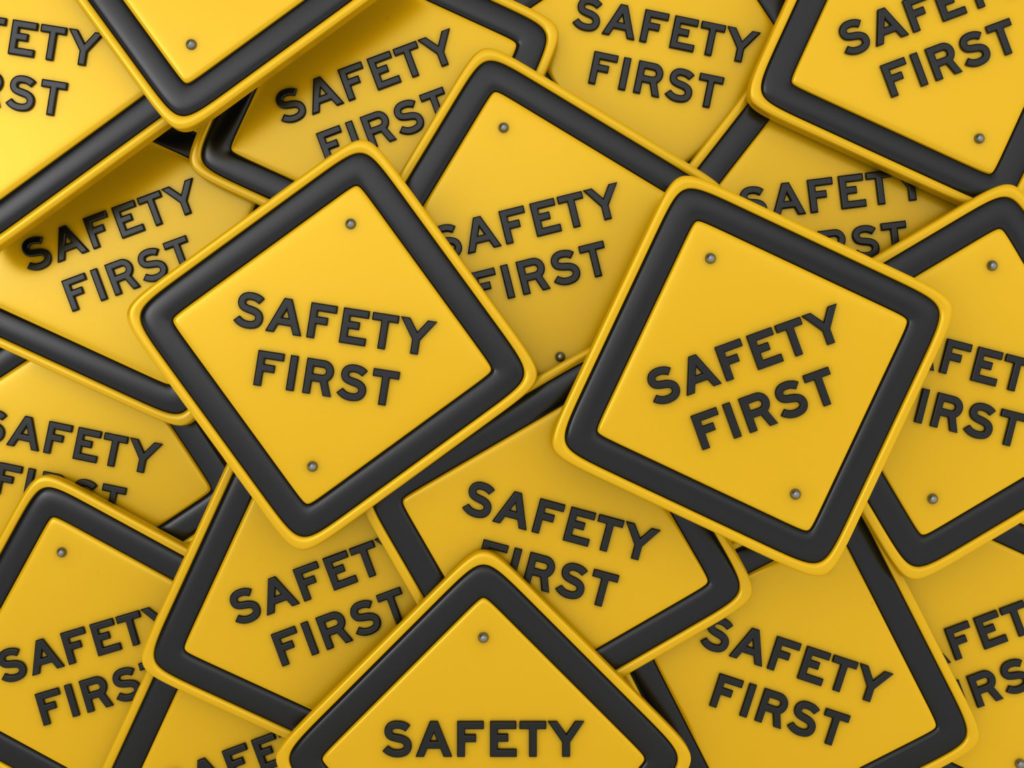By creating unique experiences, amusement parks make guests feel like they are part of something special. These unique experiences, of course, include the rides and attractions that make one park different from another. But an amusement park is an immersive experience, and a theme running through the entire park can create a lasting impression that improves the guest experience at your park.
A commonly overlooked way to create a theme throughout your park is through signage. Each amusement park is unique, and your amusement park’s safety signage can carry your theme throughout the park to create a unique guest experience.
Instead of thinking of safety signage as a necessary evil, consider it an opportunity to engage guests in a new and different way.
Amusement park safety signage reduces risks
With more than 400 amusement parks in the United States and more than 375 million guests annually, it can be difficult to get everyone’s attention.
The strategic use of unique safety signage can catch a guest’s attention and engage them in a unique and meaningful way while conveying necessary safety information and keeping with the unique theme of your park.
Amusement parks have an obligation to post appropriate warnings about potential risks associated with attractions. These include age, height, and weight restrictions, as well as warnings to guests with certain types of medical conditions.
If an amusement park fails to post the proper signage, they risk exposing guests to injuries that can lead to costly lawsuits, negative publicity, and poor guest opinions.
Amusement park liability
Negligence: An amusement park can be liable for negligence if it fails to act with reasonable care. This includes failing to post proper signage warning guests about potential risks, failing to provide guests with proper instructions, or improperly operating the ride.
Assumption of Risk: Depending on the state where your amusement park is operated, a guest may have assumed the risk of a dangerous ride by voluntarily participating in an activity that is known to be dangerous.
Words and images create impactful signs
Amusement parks contain different types of signs that serve different purposes. Types of signs include:
- Park maps
- Information signs
- Educational / Interpretive signs
- Directional signs
- Safety signs
Safety signs warning of potential hazards should always be displayed, both in the activity areas at each attraction and in the restrooms. If signage is lacking or entirely absent, this is a safety concern. Signage for directions, way-finding, safety, and parking is also important as guests will rely on them to navigate the park, and to find restrooms and other amenities.
Safety signage should be put in place for guests, but also for employees. Employees need signage on how to properly operate rides, to properly instruct rides, and how to properly inspect rides. Staff should intervene when guests are not following safety signage.
Don’t forget communication barriers
Amusement parks are responsible for communicating with guests, regardless of a guest’s language or other barriers to communication.
In 2016 a 38-year-old father suffered a fatal heart attack on the “Skull Island: Reign of Kong” ride. Jose Calderon Arana, who had a history of heart problems, did not speak English. In a wrongful death lawsuit, his family claimed that the amusement park was negligent for failing to display warning signs in Spanish.
This case highlights the need to update signs with additional languages and graphics, especially in places where Spanish populations are growing.
When updating safety signage, consider the following:
- Update all signs to include internationally recognized graphics
- When using signs that contain imagery, be creative
- The more intense a ride is, the more signage must be in place
- Consider digital signage as well as traditional methods
- Remember that staff can update content more quickly and eliminate the need to physically change a sign
- Public safety notices can be displayed to communicate information about poor weather conditions and other emergency notifications
Deliver safety & commitment to your customers
Amusement parks can be held responsible for failing to adequately warn guests about risks in the park. In some states, an amusement park will not be held liable if it can show that the guest voluntarily assumed the risk.
At McGowan Allied, we respect the traditions that are the foundation of today’s amusement industry. We are passionate about protecting the interests of our clients, supporting them as they deliver on their commitment to the customer.
Whether you have a traveling carnival, family entertainment center, amusement park, water park, or a skating center, McGowan Allied understands your business. Just as you work each day to keep that decades-old commitment to your customers, we live every day as your partners in protecting fun. Our IAAPA Elite Insurance Program brings together the best in insurance, risk management training, and safety consultation.
